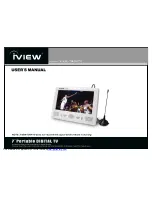
7)
EXPLOSION:
Never connect the negative (-) battery cable to the positive (+) connection terminal of the
starter solenoid, or test the battery by shorting terminals together. This could ignite fuel
vapors or cause the battery to explode. To disconnect the battery remove the negative
battery cable first and reconnect it last. Do not modify the fuel tank or propulsion engine
fuel system. Your vehicle must be equipped with a fuel pick-up arrangement as described
in the Fuel System section of this manual. Fuel tank and installation must conform to
applicable regulations.
8)
HOT COOLANT:
Allow engine to cool and release pressure from the cooling system before opening the
radiator pressure cap. To release the pressure, cover the radiator cap with a thick cloth then
turn it slowly counterclockwise to the first stop. After the pressure is released and the
engine has cooled, remove the cap.
9)
LETHAL EXHAUST GAS:
When installing an exhaust system position the tail pipe end so that the
discharged gases may not be drawn into the vehicle interior through windows, doors, air
conditioners, etc. The engine powering your generator set discharges deadly carbon
monoxide as part of the exhaust gas when running. It is essential that the exhaust system be
leak proof and routinely inspected.
10)
EXCESSIVE NOISE:
Never operate the generator set without an adequate muffler or with a faulty
exhaust system. Exposure to excessive noise can lead to a hearing impairment.
11)
ELECTRICAL SHOCK:
A battery can cause electrical burns and shocks. Use reasonable care when
working near the battery to avoid electrical connections by contacting the battery terminals
with tools. Remove wristwatch, rings and all jewelry when working on the generator set.
12)
BACKFIRE:
A sudden backfire can cause serious burns. Do not operate your generator set without its air
cleaner / flame arrestor in place.
13)
FLASH FIRE:
A sudden flash fire can cause serious burns. To avoid the possibility of a flash fire do not
smoke or permit a flame or spark to occur near the carburetor, fuel lines, fuel filter, fuel
pump or other potential source of spilled fuel or vapors.
14)
FIRE HAZARD:
Be careful when parking your vehicle to prevent grass fires from being started by hot
exhaust gases or exhaust system. Keep away from hot engine and generator parts to avoid
burning yourself. Keep the generator set and compartment clean and free of debris,
especially combustible materials. Never store fuel, oil or rags in the generator
compartment.
15)
MARINE APPLICATION:
RV generator sets do not comply with United States Coast Guard (USCG)
requirements. They must not be used for marine applications. Use only generator sets
specified for marine use in a marine application. USCG regulation 33CFR183 requires a
generator set to be ignition protected for use in a gasoline-fueled environment.
16)
UNIT STARTS WITHOUT NOTICE:
To prevent accidental starting on the units with remote start /
stop switch, always disconnect the battery by removing the negative (-) terminal first and
then the positive (+). Always disconnect the unit in this manner before working on the
generator or any equipment connected to it.
17)
LOOSE COMPONENTS:
Periodically check for and tighten any fasteners that may have become loose
from vibration or road shock. Serious damage may possibly occur if components become
dislodged or misaligned.
2
Содержание PT-10000
Страница 48: ...12...
















































